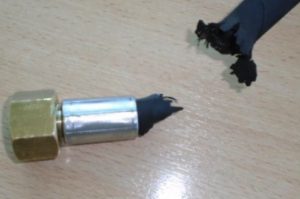
As the competitive and economic pressure on the shipping and offshore industries continues to grow, owners, operators and yards are searching for every efficiency. To support its customers, DNV GL has developed the first type approval scheme for the use of aluminium cables and connectors onboard vessels.
“This type approval represents another first for the DNV GL rule set and demonstrates our commitment to moving classification forward to help our customers,” says Geir Dugstad, Senior Vice President, Director of Ship Classification & Technical Director at DNV GL – Maritime. “Electrification is playing an increasingly important role in ship propulsion and this new type approval can help to reduce costs and improve sustainability.”
DNV GL’s new type approvals for aluminium cables and connectors allow expensive Continue reading “DNV GL issues first type approval for aluminium cables onboard ships”










